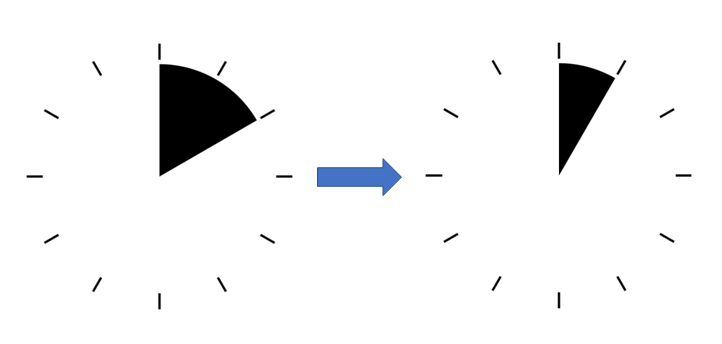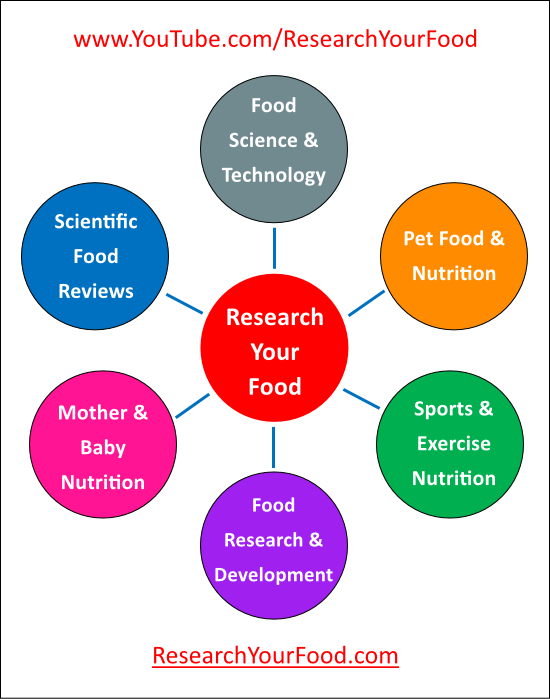Kellogg's Corn flakes Original
95 INR (₹) for 250 g. cartonIn this post I am going to do the “Scientific” Food Review of Kellogg’s corn flakes.
About Me
About

Prashanth Reddy Cheruku
Welcome! 👋
I created this platform with a mission: to educate people worldwide about Food Science, Nutrition & Preventive Healthcare. Our ultimate goal is to enhance both lifespan and healthspan—not just for people, but for PETS too!
About Me
I am a qualified Food Engineer & Sports Nutritionist with over 12 years of research & content creation experience. My academic background includes:
🎓 Master of Technology in Food Process Engineering
📍 Indian Institute of Technology (IIT) Kharagpur
“Scientific” Food Review Method
Is a scientific way of evaluating various important aspects of packaged foods, beverages, and related products available in the world.
It can give you a clear & concise insight into the positives and negatives of a product that really matter to you, as a consumer/user.
Subscribe to our newsletter!
Table of Contents
About the Brand & Company | Nutrition & Health | Drawbacks | Strengths | Sensory Appeal | Pricing | Convenience | Ingredients | Conclusion |
About the brand & Company

In the year 1894 Dr. John Harvey Kellogg & Will Keith Kellogg accidentally developed first flaked cereals (with wheat).
After some time, the same technique was used with corn and it led to the discovery of Corn flakes.
W.K. Kellogg founded Battle Creek Toasted Corn Flake Company in the year 1906. The corn flakes were first released in the same year.
It was later named as Kellogg Company & is one of the most successful food companies in the world.
Kellogg Company has its headquarters at Battle Creek, Michigan, USA
This review unit is from India.
Now let us look at the Nutrition & health aspects of the product.
Nutrition & health
World Health Organization proposed nutrient intake goals for preventing diet-related chronic diseases. The last column of the table depicts the ranges for the individual nutrients. (1)
For example, if a person’s daily energy requirement is 2000 kcal, then ideally 10-15% of those calories should come from protein, 15-30% should come from fat and the rest 55-75% from carbohydrates.
In a day if each meal we consume is closer to these ranges it would be better for our health. If we consume 70% of our daily fat requirement in the breakfast and no protein it would not be an ideal diet. Each meal should be closer to the WHO nutrient intake goals for good health.
Hence, I compare the products in the scientific food review methodology to the reference intakes of WHO.
Now let’s look at the nutritional information of the Kellogg’s corn flakes and compare it with the WHO ranges.
| For 30g | 30 g Serving + 200 ml of cow’s milk | For 100g | WHO | |
| Total Carbohydrates (g) | 26.1 | 36.0 | 87.0 | 55-75% |
| Sugar (Sucrose) (g) | 2.5 | 2.5 | 8.33 | <10% |
| Dietary Fibre (g) | 0.8 | 0.8 | 2.67 | |
| Protein (g) | 2.0 | 8.5 | 6.67 | 10-15% |
| Total Fat (g) | 0.3 | 9.3 | 1.0 | 15-30% |
| Saturated Fatty Acids (g) | 0.2 | – | 0.67 | <10% |
| MUFA (g) | 0 | – | 0 | By Difference |
| PUFA (g) | 0 | – | 0 | 6-10% |
| Trans Fatty Acids (g) | 0 | – | <1% | |
| Cholesterol (mg) | 0 | – | 0 | <300 mg/day |
| Energy (kcal) | 114 | 260 | 380 |
Sodium 150 mg
As you can see in the table Kellogg’s corn flakes contain 87 g carbohydrate out of 100 g of the product. The protein content is just 6.67 g and the fat content is 1 g.
If we look at the composition of plain Kellogg’s corn flakes, they are quite far from the WHO nutrient intake goals. So, it’s not a good idea to consume plain flakes.
The suggested consumption method is 30 g of corn flakes with 200 ml of cow’s milk. The addition of milk changes the overall composition and helps the product in conforming to the WHO goals.
Now let’s look at the drawbacks and strengths of this product.
I would like to remind you an important point here.
If we look at any product in the world, there will be some drawbacks. In the modern world with little free time, it will be extremely difficult to avoid all packaged foods just because they have some health risks. Whenever possible I will suggest workarounds for the drawbacks of the products that I review.
Drawbacks
- I personally feel the serving size of 30 g of corn flakes in the breakfast is impractical. 30 g serving size along with 200 ml milk provides only 260 kcal. This serving suggestion as a breakfast does not provide enough calories for most adults in the world.
I would suggest you to strictly follow the serving suggestion. Add fruits & nuts to your diet to get the required calories.
- Kellogg’s corn flakes contain too much of carbohydrate content and not sufficient protein. Only when they are mixed with milk the amount of protein increases and the overall energy from the carbohydrates becomes ideal.
Do not consume plain corn flakes. Consume with milk and add other protein rich foods during the rest of the day.
Strengths:
- This product contains good amount of added vitamins & Iron. They will help us in reaching our daily requirement goals of those specific nutrients.
- If we follow the prescribed method of consuming Kellogg’s corn flakes it is suitable for almost all the age groups of people.
- Contains no cholesterol
- No artificial sweeteners are present in the product
- It is naturally low in saturated fat and total fat.
- It has no Transfat
Now let’s look at the sensory appeal of this product.
Sensory appeal defines how we perceive various attributes of a product with our senses.
Sensory Appeal
Kellogg’s corn flakes are in golden colour with blisters on them and look quite good. Most of the individual flakes appear even in size and shape.
They are very crispy when stored properly. As per the brand they taste best when cold milk is added to them.
The texture stays crisp in the milk for around 3-4 minutes.
They have a mild flavour of corn when eaten with milk. We must try to consume them immediately after addition of milk to have the best taste & texture.
If no sugar is added to them, they taste a bit bland. Addition of even a little amount of sugar significantly enhances the taste.
Overall, as per the serving suggestion of the brand the flakes taste moderately good.
Now let’s look at the pricing details of the product.
Pricing
Kellogg’s corn flakes cost 95 INR for 250 g. carton. At this price this product falls under budget friendly segment.
In India this product is also available in pillow pack for cheaper price to cater to the lower income segment.
Corn flakes from other brands cost slightly lesser compared to Kellogg’s.
Other breakfast cereals such as muesli, granola and wheat-based cereals cost significantly higher than this product.
Convenience

A food product performs well in the convenience section when
- The preparation time required to consume it is as less as possible and
- The preparation needs very little mental & physical effort.
The suggested method of consuming the Kellogg’s corn flakes.
- Pour corn flakes in a bowl.
- Add 200 ml of milk to 30 g of the flakes. The product tastes best with cold milk.
- Corn flakes are ready to consume. Try to consume them immediately as they get softer after a few minutes.
The preparation time necessary to consume Kellogg’s corn flakes is quite less.
Mental effort needed depends on how simple or complex the cooking method is. Simpler cooking or consuming method increases the convenience of a product.
Mental effort needed to consume Kellogg’s corn flakes is minimal as we just need to add cold milk to them before consumption.
Physical effort includes things such as easy availability of the product, whether product can be cooked in a microwave oven, and whether the product comes with a disposable container (as this reduces the dishwashing effort needed).
Physical effort needed in the case of Kellogg’s corn flakes is also quite less. This product is available very easily and does not need any cooking. Since the product does not come with a disposable container the bowl washing is necessary.
Overall, this product is quite good in the convenience section.
Now let’s look deeper into the ingredients of this product.
Ingredients
There are very few ingredients in this product. They are Corn Grits (87.7%), Sugar, Cereal extract, Iodized salt, Vitamins, Minerals and Antioxidant (INS 320).
Corn grits are obtained when the corn undergoes dry milling. Dry milling process of corn produces corn grits, corn meal, germ, corn flour and others. The major portion of the corn grits is carbohydrate. This is the main reason why corn flakes are loaded with carbohydrates.
Sugar is the second most ingredient of the product as per the weight. Sugar is added to the products to enhance the taste and likeability. It also reduces the cost of the product. But at the same time, it also reduces the nutritional quality.
The other ingredients are Cereal extract and iodized salt.
This product contains added vitamins such as A, C, and multiple B complex vitamins. It also contains Iron.
Antioxidant (INS 320)
Butylated hydroxy anisole:
This product contains added vitamins. BHA is added to breakfast cereals in general to retard autooxidation of the vitamins or unsaturated fats.
Conclusion
Kellogg’s corn flakes brand is in one of the most successful cereal brands in the world. It is generally marketed as a healthy, delicious, and nourishing breakfast cereal.
This product out of the box is not really healthy. When we add milk and strictly follow the suggested serving suggestion then the product becomes an ideal breakfast.
The added vitamins and minerals certainly help us in reaching the respective Recommended Dietary Intake levels.
The suggested serving of the product tastes moderately good without adding sugar.
Convenience section is where this product performs exceptionally well and can act as a quick meal.
Overall, I suggest healthy adults and children to consume this product strictly following the suggested method of consumption.
I would suggest not to eat plain corn flakes as they have a very high amount of carbohydrate and too little fat.
At Research your food I create content related to food science & Nutrition. As you can see in this picture, I create content related to these six sub fields of food science.

How often do you eat Kellogg’s corn flakes? Do you like them? Let me know in the comments below.
If you have any questions, concerns and suggestions please let me know.
To get the latest updates about our videos consider subscribing to our YouTube channel and follow ResearchYourFood.com website.

Leave a Reply